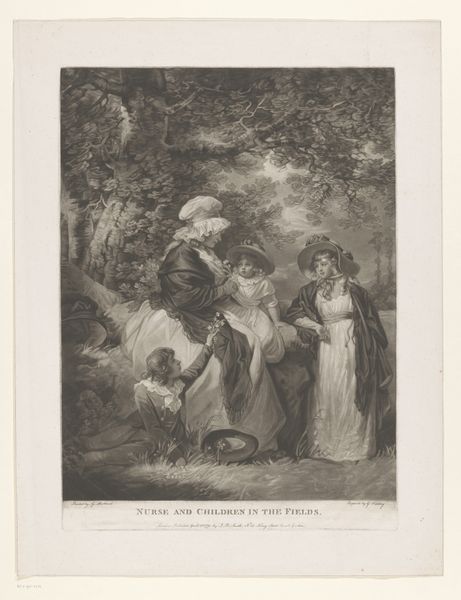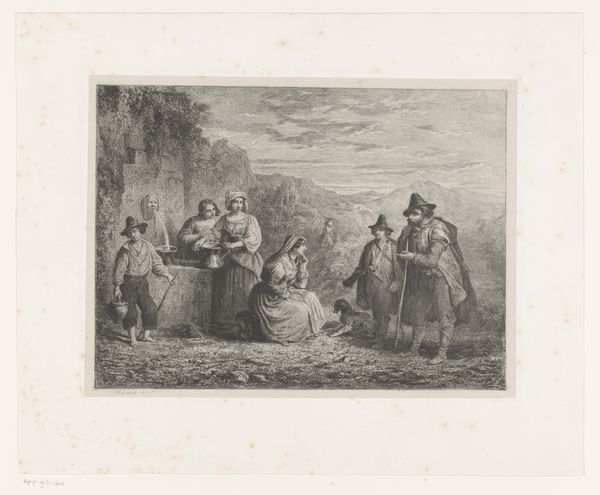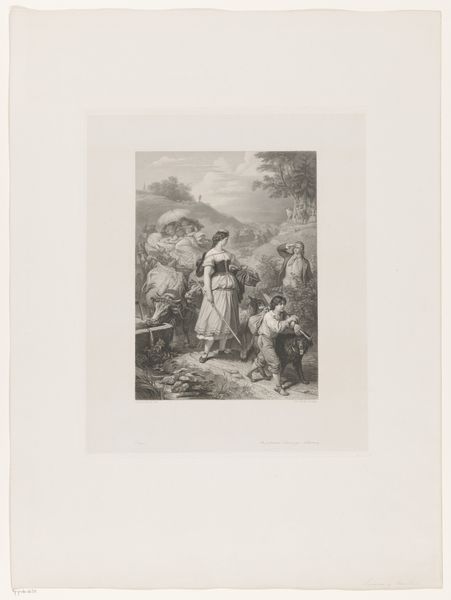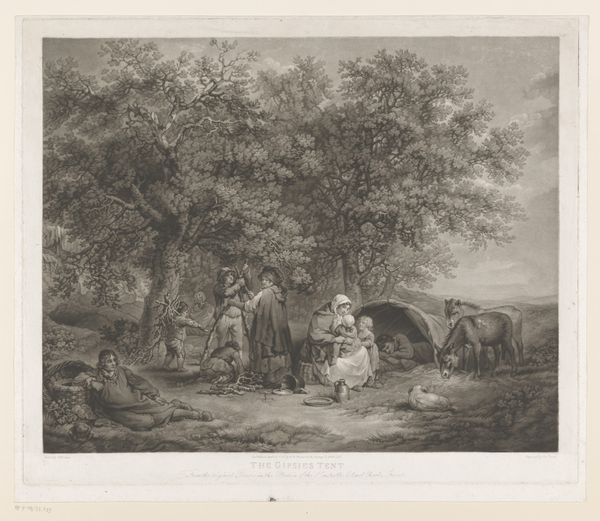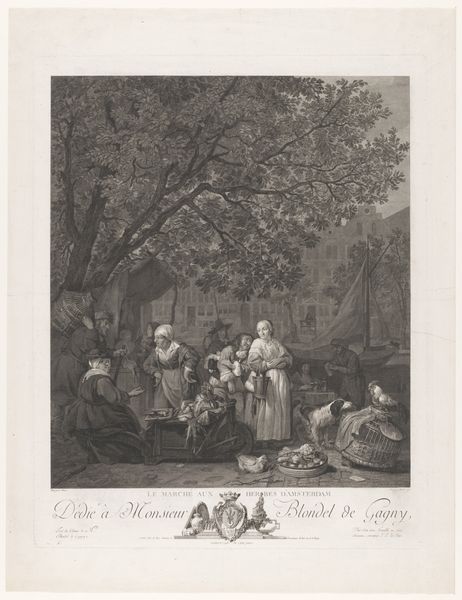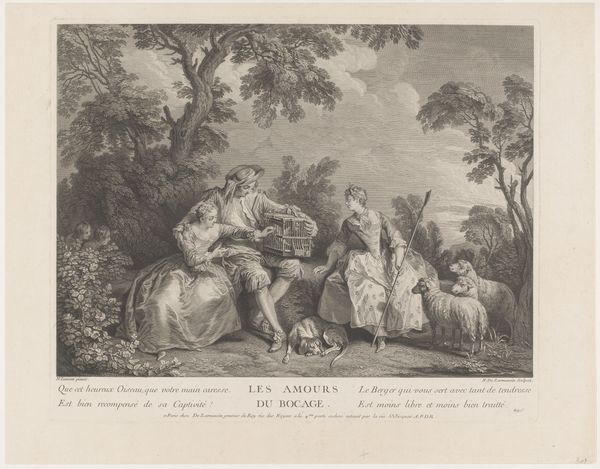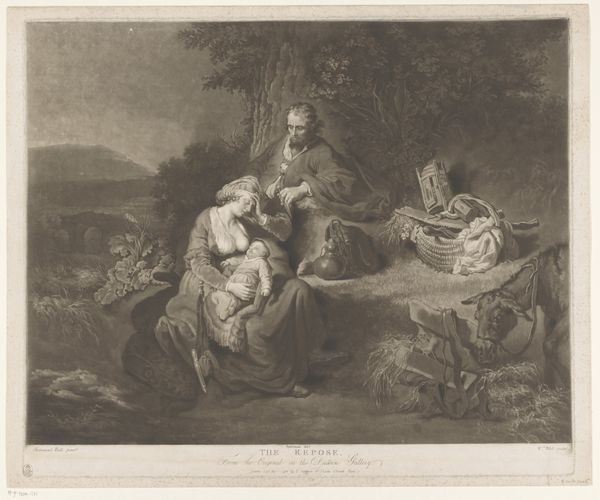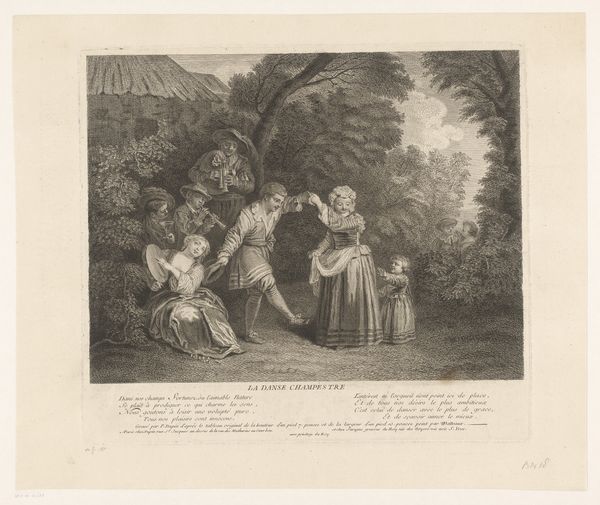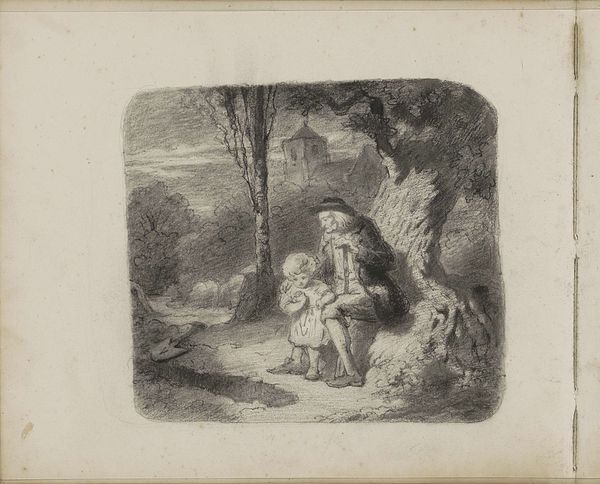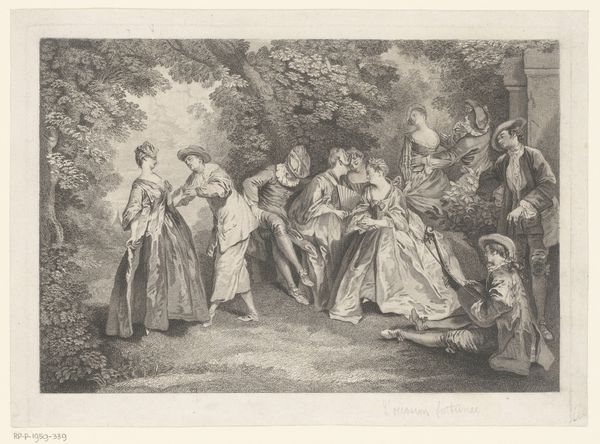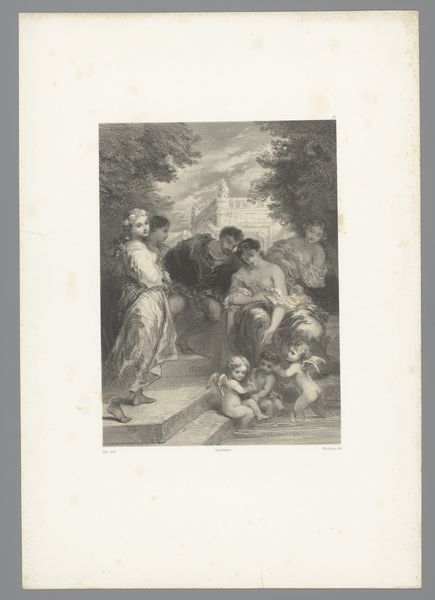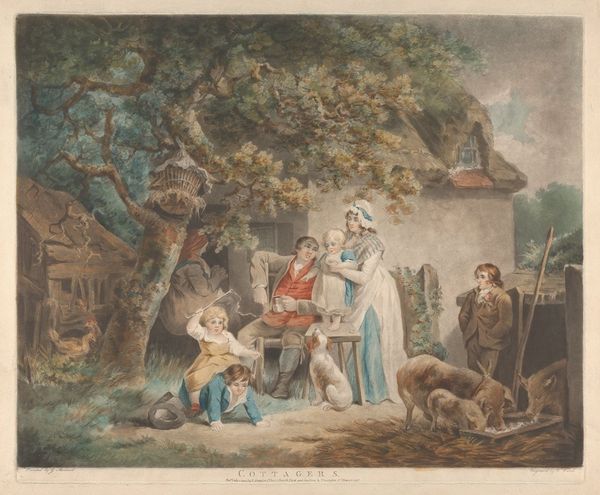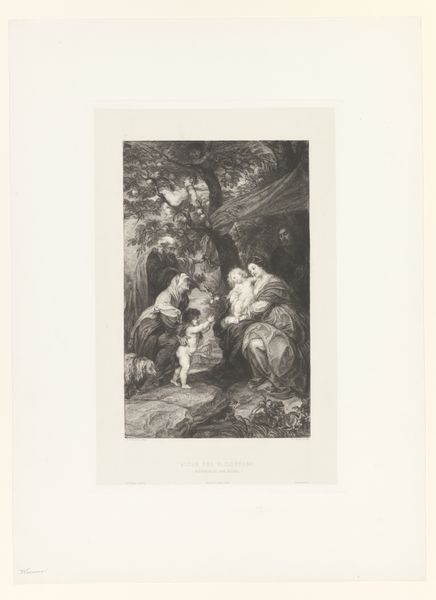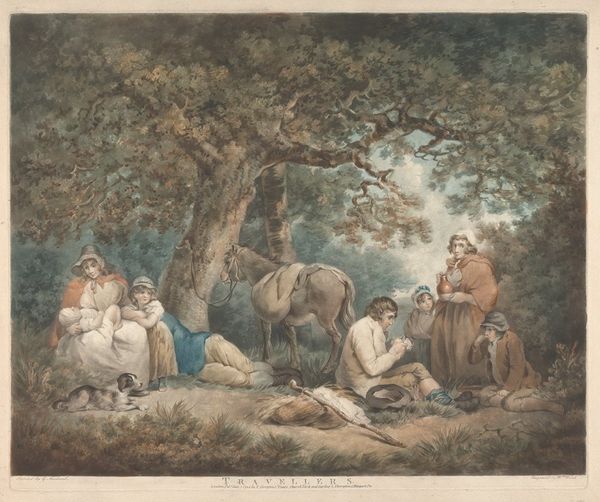
watercolor
#
portrait
#
16_19th-century
#
landscape
#
watercolor
#
genre-painting
#
watercolor
Dimensions: height 247 mm, width 350 mm
Copyright: Rijks Museum: Open Domain
Editor: Here we have "Groepje hengelende Italiaanse vrouwen," or "Group of Italian Women Fishing," a watercolor by Karel Frans Philippeau, created sometime between 1835 and 1892. The composition feels quite idyllic, almost dreamlike, with these women gathered peacefully by the water. How do you interpret the scene, especially considering the period it was made? Curator: Well, looking at this as an image steeped in its own time, several symbols stand out. The act of fishing itself, particularly performed by women, carries layers of meaning. Fishing can be linked to sustenance, certainly, but also to patience, waiting, and a connection to nature, which would resonate with certain romantic ideals of the era. Note their clothes, and the implicit hierarchy indicated, with some women tending to others' needs: the water represents life, mystery and, ultimately, change. Does anything stand out to you regarding their placement within this landscape? Editor: I am interested by their location by the water source and its proximity to wild nature, but also domesticated nature. It seems there's this interplay between the two, mirroring perhaps, the women's roles in society. Do you see any specific narratives being highlighted? Curator: Absolutely. These visual cues point to idealized versions of feminine roles. Are they working, playing, or simply existing in the margins? It is not fully definable, reflecting the ambiguous position women held socially at that time, on the edge of public power. Editor: So the "dreamlike" quality I observed isn't accidental. It's a calculated presentation, not necessarily realistic but representative of a specific desire. Thanks, seeing it through a cultural memory lens like this has completely changed how I read the image. Curator: Indeed. By decoding the visual language and identifying the underlying cultural aspirations and assumptions, we can have a deeper connection to artworks across time and circumstance.
Comments
No comments
Be the first to comment and join the conversation on the ultimate creative platform.
